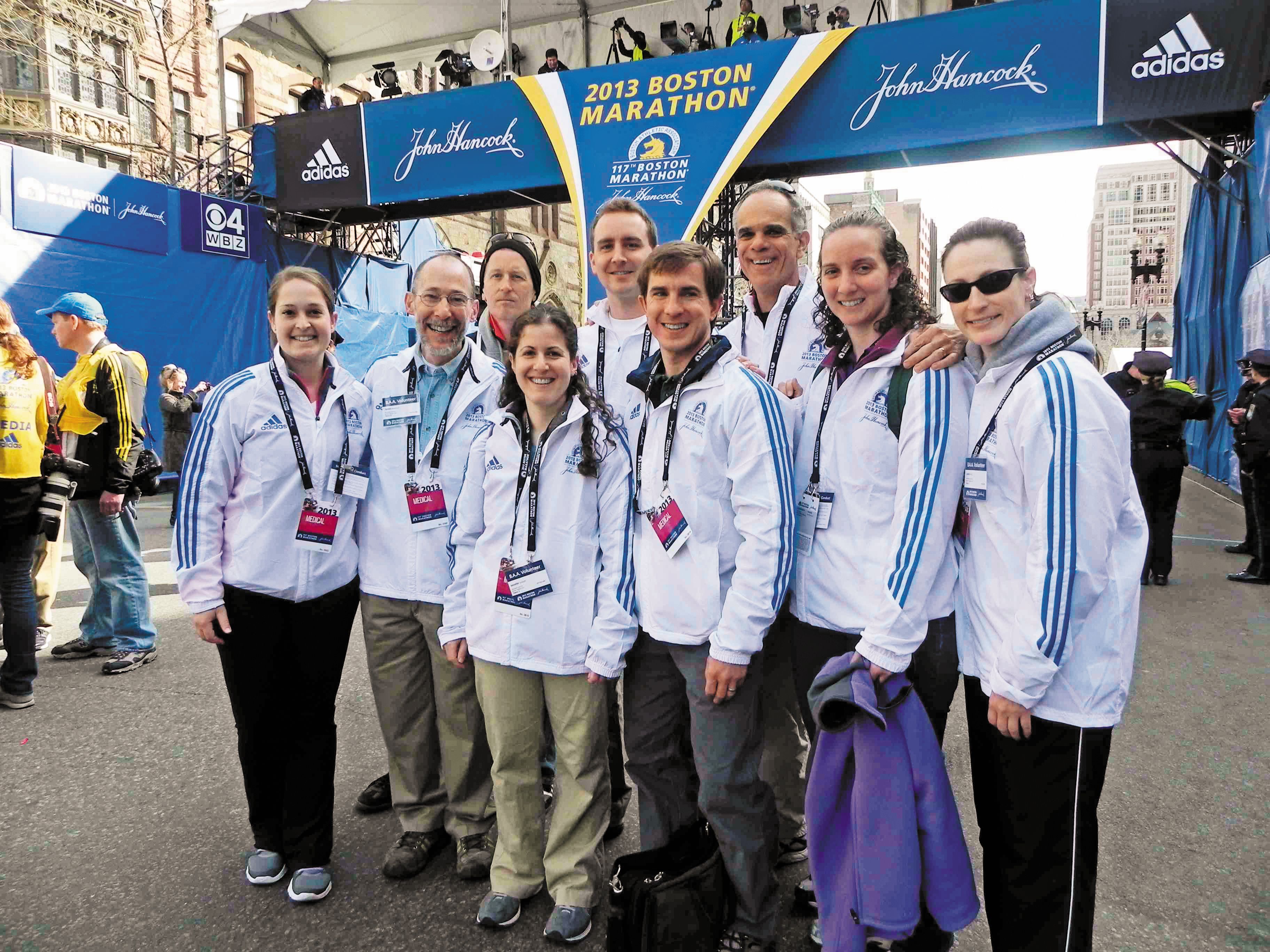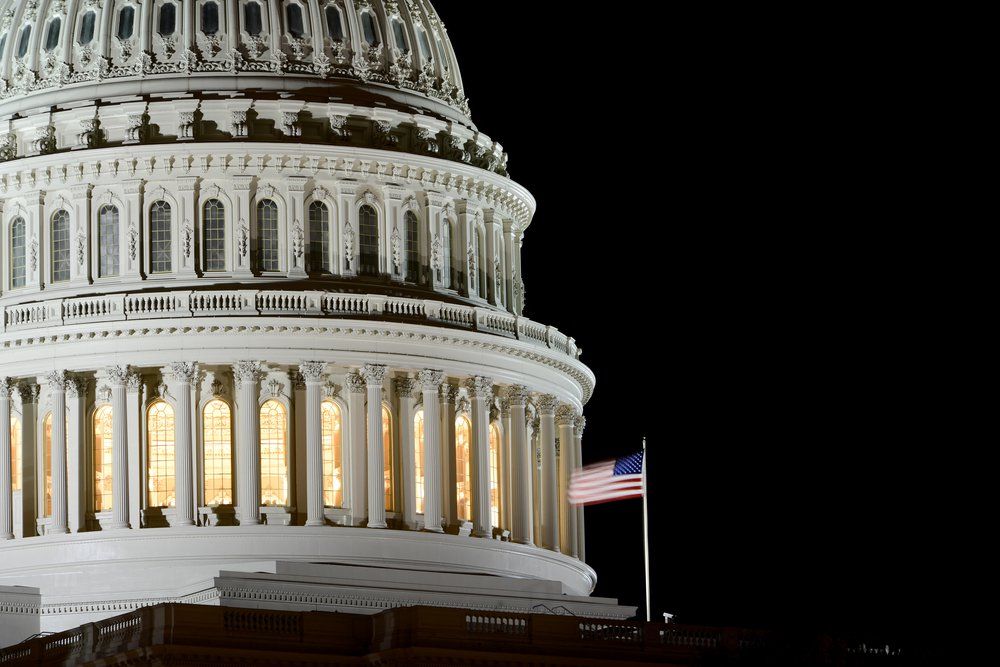Article
Remembering the Boston Marathon tragedy: A report from physicians who were there
The Boston Marathon bombings brought forth a spirit of teamwork and compassion among the many healthcare providers who volunteered to help treat the victims of that tragedy.
For more than 6 weeks, the bloody pants Pierre Rouzier, MD, had worn on April 15, 2013, rested at the bottom of his closet. He’d looked at them two to three times a day, every day, since the bombings; but Rouzier, a family and primary care sports medicine physician at the University of Massachusetts in Amherst couldn’t bring himself to touch them.
Finally, in late May-about a week before the last of the injured victims would be released from Boston-area hospitals-Rouzier picked the pants up and looked at them, trying to decide whether to clean or throw them away. “My left knee was the bloodiest because that’s what I was kneeling on [to help victims],” Rouzier says. “And there was splattered blood everywhere else, so I decided to throw them away.”
But while the material reminders of that day could be removed, Rouzier and other volunteer physicians working in and around the medical tent during the 117th running of the Boston Marathon will be forever changed by their experience.
Celebrated day turned deadly
Compared to 2012, when extreme heat caused thousands of runners to defer their race entry to the following year and scores who did compete suffered severe hyperthermia, physicians’ workload during the race was manageable.
“It was a picture perfect day,” recounts James Broadhurst, MD, a family physician at UMass Memorial Medical Center in Worcester, Massachusetts, of his ninth time volunteering at what many consider the most celebrated marathon in the world. With the temperature just right and a gentle sea breeze soothing runners as they pushed up Heartbreak Hill, the team of medical volunteers had a steady stream of patients to tend to, but no one was inundated.
All that changed at 2:50 p.m., when two shrapnel-filled pressure-cooker bombs exploded near the race finish line.
“It was the most surreal picture you’d ever imagine,” Rouzier, 56, says of his fifth year staffing the marathon medical tent. “We ran down the 75 yards or so and came into an area of maybe 20 feet by 40 feet, and there were just bodies on bodies lying on the ground.” These individuals included both the injured and those consoling them, Rouzier says, adding that he and his team ran past one man’s severed foot and leg on their way to help.
“And everybody-all the victims-had that gray look,” Rouzier says. “There was the smell of blood and the smell of burning clothes and flesh. And there were pools of blood everywhere.”
That afternoon, the death toll was three, while 264 injured were treated at 27 local hospitals.
Broadhurst, who stayed in the tent to treat casualties, was convinced based on what he heard from colleagues that at least five people were killed by the blasts. “I was overjoyed to hear there were only three,” he says. “But I fully expected to hear by Wednesday that that number would be five and by Friday it would be nine.”
A testament to teamwork
Broadhurst credits the survival and recovery of more than 200 injured victims to the outstanding performance of emergency medical services (EMS) personnel on the scene and dispatching patients to hospitals. “One of the things that I found extremely heartening was reporters standing in front of emergency rooms saying that emergency room personnel had noted how severe the injuries were that they were seeing but how remarkably stable the patients were who were showing up,” he says.
“And that’s a testament to the EMS folks and what we were able to achieve in the tent by stabilizing people as rapidly as we could and then transporting them as rapidly as we could in order to get them to sites of definitive care,” Broadhurst says. “For that I’m incredibly grateful and feel very proud that I was able to be part of a much larger operation that succeeded so well in saving lives.”
The teamwork displayed among all volunteers, medical personnel, and first responders throughout the disaster also made an impression on Chad Beattie, MD, a primary care sports medicine doctor in the Department of Orthopedics at Hawthorn Medical Associates in Dartmouth, Massachusetts.
“Everybody just became equals and found a role and did it regardless of their training,” says Beattie, who graduated from his fellowship in July 2012 and was volunteering for his fifth Boston Marathon.
“Just by my proximity to where the bombs went off, I had to have been the first one from the medical tent there,” he says, “and there was hardly anything for me to do because there were just so many other people there. Within 2 minutes after the bombs went off, the streets were just flooded with people helping.”
Rouzier also found himself in awe of the fast and thorough response from personnel on the scene, recounting that every patient he checked to apply a tourniquet already had one. “Finally I rolled up my bloody belt and stuck it in my pocket because everybody had tourniquets put on,” he says.
Having a full supply of willing and qualified personnel in the tent and at the finish line made it possible for Broadhurst to take on the important job of providing emotional support to individuals who weren’t necessarily in medical danger.
“People need reassurance. They need to know they are safe. They need to know they are being cared for,” Broadhurst says. “Given the number of personnel that we had, you had a doctor who could look after three or four or five patients, so you didn’t have people lying off in a corner not receiving attention because they weren’t terribly injured and there were so few providers that they had to concentrate on the most severe.”
‘Everyone there was a victim’
After experiencing traumatic events such as this, the healers are not the least of those who need healing.
As Broadhurst notes, “everyone who was there was a victim of that disaster. And as a physician, I am no more immune to that than anybody else.”
About a week after the attack, Broadhurst, Beattie, and Rouzier were among about 30 marathon-day medical volunteers who attended a debriefing session held at UMass in Worcester in which facilitators worked with providers to help process having experienced the disaster. “We were together for 4 to 5 hours and that was enormously helpful to me individually and for us collectively,” Broadhurst says.
In the days immediately following the attack, Rouzier and Beattie attended a prescheduled professional meeting in California, and both credit having the other to talk to as being a critical part of the healing process.
“Probably I was lucky that I went to San Diego right afterwards because I could just be away from day-to-day work and I could be around people who were there,” Beattie says, adding, “and Pierre [Rouzier] was especially the biggest help to me.”
Nonetheless, going back to work had its challenges. For Beattie, having witnessed the most horrific injuries he had seen in his career so far made it difficult to listen to patients in his office complain about relatively minor problems.
“You don’t want to take it out on them and you don’t want to say, ‘there are people who have it worse than you,’ but that’s what you’re thinking inside,” he says. “Before I went in to see every patient, I had to sort of recheck myself and reset things a little bit. That was probably the hardest part.”
For Beattie’s colleague Rouzier, a major struggle was coping with feeling that his efforts to help patients on April 15 weren’t enough. With the help of a therapist specializing in post-traumatic events, Rouzier recognized that his mentality was similar to a linebacker on a football team who had made 15 tackles lamenting the two that he had missed.
“Finally, the therapist asked me, ‘What physical symptoms are you feeling?,’” Rouzier says. “I still get them, and I said, ‘I’m getting this stabbing feeling over my heart.’ And she just smiled and said, ‘Oh, that’s right over your heart. Consider you’re sending love to the victims.’”
Moving forward
Despite the emotional wounds suffered by doctors from that tragic day, they came away with lessons that will influence the way they care for patients going forward.
For Beattie, the crash course he received in trauma care on April 15 may not come much into play during his office practice, but he expects it will make him better prepared to handle serious injuries he may one day encounter working on the sidelines of athletic events.
“I hated to be there,” Beattie says of the 2013 Marathon, “but at the same time I’m kind of glad that I was there in the sense that it’s just another life experience that will help me down the road.”
Meanwhile, Broadhurst, with nearly 30 years more experience as a practicing physician than Beattie, says he came away from the disaster with a new appreciation for how significantly being part of a disaster can affect providers and patients alike.
“I now have an appreciation for how that can adversely affect folks and certainly a greater appreciation for the importance of intervention to try to prevent the disabling development of post-traumatic stress disorder in individuals,” he says, adding that the resources provided at the UMass debriefing session helped set him on a path to healthy coping with his experience.
“And as a physician, it’s given me a much better appreciation for how important it is for me to assist others who may have experienced a traumatic event,” says Broadhurst, who also practices addiction medicine, “and not accept an explanation from the individual that they’re okay, but spend a little additional time, and having a low threshold for referring patients for evaluation.”
Happily, just as Broadhurst says he’s learning to integrate this difficult experience into his life in a healthy way, so too do Beattie and Rouzier report that they are coping much better as of early June than during the first weeks after the bombing.
“I’m doing much better,” Beattie says. “I think about it a lot less, and when I do think about it, it’s not as emotional. I can think about it and not break down or freak out.” Even months after the event, however, Beattie says he and many others who were onsite are still affected by loud bangs and the sound of sirens. “Everyone’s still very jumpy,” he says.
For Rouzier, intense emotions struck three weeks after the attack, while watching the Boston Celtics play the New York Knicks at Boston’s TD Garden. Despite Rouzier’s yearning to be around Boston sports fans and celebrate the “Boston Strong” mantra the city had adopted, hearing the Dropkick Murphys’ 2005 song, “Shipping up to Boston [to find my wooden leg],” played in the stadium caused him to shake and cry, he says. After the game, Rouzier decided to walk back to the bomb site.
“There was the memorial where the tent was, and then there were flowers laid where the probable bomb went off, which is where I could imagine myself kneeling and working,” he says. “That was a big deal for me to get that type of closure to that.”

The medical team: During the Boston Marathon there were 14 personnel from the University of Massuchesetts Medical School on call. By day’s end, emergency medical responders cared for more than 200 injured victims. James Broadhurst, MD, is second from the left (front row). Chad Beattie, MD, and Pierre Rouzier, MD, are in the back row (right).





